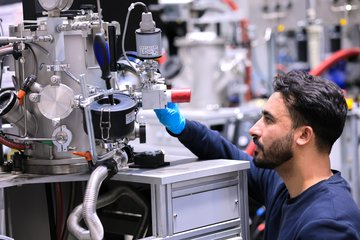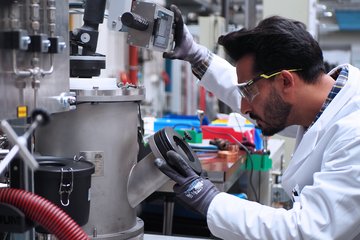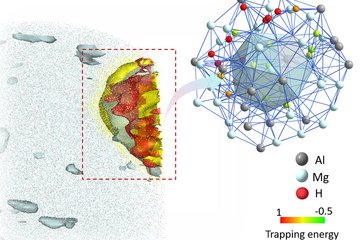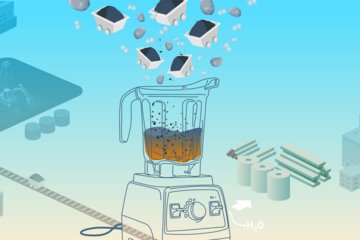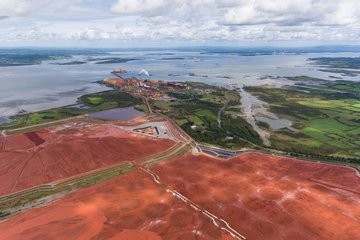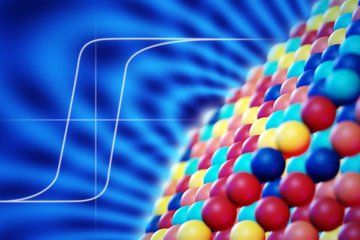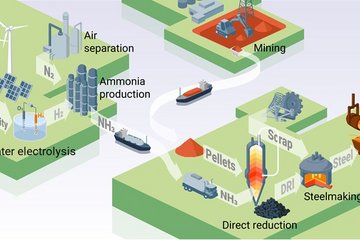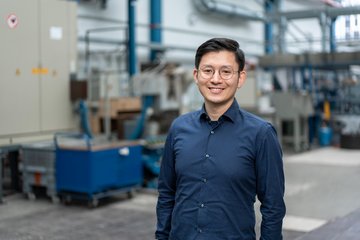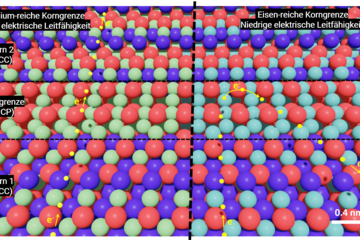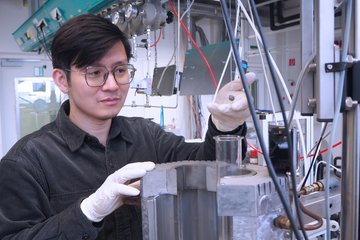Alle Typen
621.
Zeitschriftenartikel
Interaction between recrystallization and phase transformation during intercritical annealing in a cold-rolled dual-phase steel: A cellular automaton model. Acta Materialia 61 (14), S. 5504 - 5517 (2013)
622.
Zeitschriftenartikel
Element-Resolved Corrosion Analysis of Stainless-Type Glass-Forming Steels. Science 341 (6144), S. 372 - 376 (2013)
623.
Zeitschriftenartikel
Microbanding mechanism in an Fe–Mn–C high-Mn twinning-induced plasticity steel. Scripta Materialia 69 (1), S. 53 - 56 (2013)
624.
Zeitschriftenartikel
Simulation of shear banding in heterophase co-deformation: Example of plane strain compressed Cu–Ag and Cu–Nb metal matrix composites. Acta Materialia 61 (12), S. 4591 - 4606 (2013)
625.
Zeitschriftenartikel
Hydrogen-assisted failure in a twinning-induced plasticity steel studied under in situ hydrogen charging by electron channeling contrast imaging. Acta Materialia 61 (12), S. 4607 - 4618 (2013)
626.
Zeitschriftenartikel
Atomic-scale compositional characterization of a nanocrystalline AlCrCuFeNiZn high-entropy alloy using atom probe tomography. Acta Materialia 61 (12), S. 4696 - 4706 (2013)
627.
Zeitschriftenartikel
Effect of climb on dislocation mechanisms and creep rates in γ’-strengthened Ni base superalloy single crystals: A discrete dislocation dynamics study. Acta Materialia 61 (10), S. 3709 - 3723 (2013)
628.
Zeitschriftenartikel
Viscous coalescence of droplets: A lattice Boltzmann study. Physics of fluids 25 (5), 052101 (2013)
629.
Zeitschriftenartikel
Nanocrystalline Fe–C alloys produced by ball milling of iron and graphite. Acta Materialia 61 (9), S. 3172 - 3185 (2013)
630.
Zeitschriftenartikel
On dislocation involvement in Ti–Nb gum metal plasticity. Scripta Materialia 68 (10), S. 805 - 808 (2013)
631.
Zeitschriftenartikel
Atom Probe Tomography Studies on the Cu(In,Ga)Se2 Grain Boundaries. Journal of Visualized Experiments 74, e50376 (2013)
632.
Zeitschriftenartikel
Ab initio and atomistic study of generalized stacking fault energies in Mg and Mg–Y alloys. New Journal of Physics 15 (4), S. 043020-1 - 043020-19 (2013)
633.
Zeitschriftenartikel
Measurement of the indium concentration in high indium content InGaN layers by scanning transmission electron microscopy and atom probe tomography. Applied Physics Letters 102 (13), 132112 (2013)
634.
Zeitschriftenartikel
Ab initio study of single-crystalline and polycrystalline elastic properties of Mg-substituted calcite crystals. Journal of the Mechanical Behavior of Biomedical Materials 20, S. 296 - 304 (2013)
635.
Zeitschriftenartikel
Grain boundary segregation in a bronze-route Nb3Sn superconducting wire studied by atom probe tomography. Superconductor Science and Technology 26, S. 055008-1 - 055008-7 (2013)
636.
Zeitschriftenartikel
Maintaining the equipartition theorem in small heterogeneous molecular dynamics ensembles. Physical Review E 87 (3), S. 030101-1 - 030101-4 (2013)
637.
Zeitschriftenartikel
Thermodynamics of carbon solubility in ferrite and vacancy formation in cementite in strained pearlite. Acta Materialia 61 (5), S. 1773 - 1784 (2013)
638.
Zeitschriftenartikel
Direct evidence for the formation of ordered carbides in a ferrite based low-density Fe–Mn–Al–C alloy studied by transmission electron microscopy and atom probe tomography. Scripta Materialia 68 (6), S. 348 - 353 (2013)
639.
Zeitschriftenartikel
Self-consistent scale-bridging approach to compute the elasticity of multi-phase polycrystalline materials. Materials Research Society Symposia Proceedings 1524, S. 17 - 23 (2013)
640.
Zeitschriftenartikel
Lattice Boltzmann modeling of advection-diffusion-reaction equations: Pattern formation under uniform differential advection. Communications in Computational Physics 13, S. 741 - 756 (2013)
